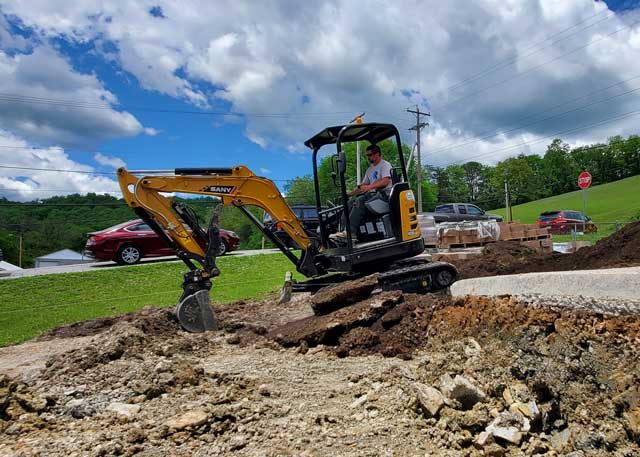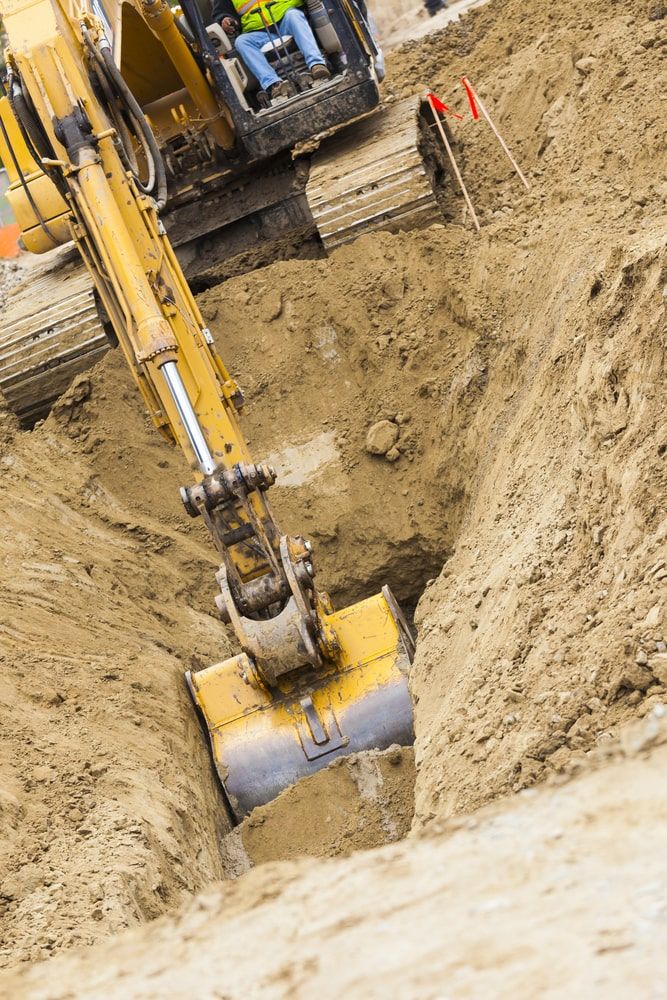Commercial Lancaster Trenching - Trenching Providers for Businesses in Lancaster
Introducing the Art of Excavation: Pro Tips for Safe and Effective Excavating
As dirt is turned and planet is moved, the ins and outs of excavation reveal themselves, demanding an eager understanding of equipment, soil make-up, security methods, and environmental factors to consider. The competence required to navigate these components effectively can indicate the distinction between an effective excavation task and a prospective calamity.
Importance of Appropriate Tools
To make certain the safety and security and performance of any excavation project, utilizing the suitable equipment is critical. Excavation jobs differ in range and intricacy, ranging from little property landscape design tasks to large building and construction undertakings.
Excavators are fundamental pieces of machinery in any type of digging operation. These versatile devices been available in various sizes to suit various task demands. Tiny excavators are suitable for smaller tasks, while larger excavators take on more extensive projects successfully. Backhoes are an additional necessary devices type, combining the features of a loader and an excavator in one maker. They are important for tasks calling for convenience and maneuverability.
Besides excavators, other critical devices includes dump excavators, trucks, and plates. Dispose vehicles are vital for removing and moving excavated materials, while plates are used for excavating deep and slim trenches. Excavators stand out in jobs that require pressing big amounts of soil or particles. By buying the proper tools, excavation projects can be finished securely, on schedule, and with accuracy.
Comprehending Dirt Composition
A detailed understanding of soil composition is essential for implementing excavation projects with precision and security. Recognizing the various types of soil is vital as it straight impacts excavation techniques, devices choice, and total task efficiency. Soil structure normally contains 4 main components: sand, silt, clay, and raw material. Each element has special homes that influence exactly how dirt responds to excavation procedures.
Silt particles are smaller sized than sand yet bigger than clay, using modest water drainage and communication. Organic matter, such as decomposing plant material, affects dirt fertility and security.
Before commencing excavation, performing dirt tests to establish its make-up and attributes is necessary. This info helps in picking the suitable equipment, applying security measures, and creating excavation methods tailored to the details dirt conditions - lancaster excavation. By comprehending soil make-up, excavation experts can boost job outcomes while making sure safety and adherence to ideal practices
Precaution and Protocols
Recognizing soil make-up is the foundation whereupon security actions and procedures for excavation tasks are developed, ensuring the wellness of employees and the success of the endeavor. When it involves security throughout excavation, there are several vital actions that should be applied to reduce dangers and prevent accidents.
First and foremost, prior to any kind of digging commences, a thorough assessment of the site ought to be carried out to identify any prospective threats such as below ground energies, unstable soil conditions, or close-by frameworks that might posture a danger. It is essential to have an experienced person manage the excavation process to make sure that all safety and security protocols are adhered to purely.
Moreover, all employees included in the excavation should be correctly trained in safe digging techniques and the correct procedure of devices. By adhering to these security steps and protocols, excavation projects can be completed successfully and without case.
Reliable Excavation Preparation
When getting started on an excavation task, thorough preparation is vital to ensure more tips here efficiency, safety, and successful outcomes. Reliable excavation preparation entails a number of crucial actions that are crucial for the smooth execution of go to this website the job. The very first step is to conduct a detailed website analysis to recognize any kind of possible threats, such as below ground utilities or unsteady soil conditions. This information is vital for creating a comprehensive excavation plan that includes safety steps and run the risk of reduction approaches.
Once the website analysis is complete, the following action is to produce a clear timeline and timetable for the excavation tasks. This consists of determining the sequence of jobs, tools demands, and workforce allocation. Appropriate organizing helps prevent hold-ups and ensures that the job remains on track.

Additionally, communication among all employee is critical throughout the preparation stage. Clear directives, regular updates, and efficient sychronisation are essential for a successful excavation project. By investing effort and time in thorough planning, excavation teams can dramatically enhance efficiency, decrease risks, and accomplish successful results.

Handling Environmental Considerations
With raising focus on ecological sustainability in construction practices, taking care of ecological considerations has actually ended up being an important aspect of excavation jobs. Excavation activities have the potential to influence the surrounding atmosphere via dirt useful content disintegration, sediment drainage, habitat disturbance, and contamination of water sources. To mitigate these threats, it is necessary to carry out best methods that prioritize environmental management.

Moreover, correct waste monitoring is critical to prevent dirt and water contamination. Implementing treatments for the disposal of unsafe products, recycling of waste products, and lessening the usage of dangerous chemicals can dramatically lower the ecological influence of excavation tasks. By incorporating these methods into excavation planning and execution, construction companies can ensure that their tasks are not only safe and productive yet additionally ecologically accountable.
Final Thought
To conclude, mastering the art of excavation requires an extensive understanding of appropriate equipment, dirt structure, security measures, and reliable preparation. By following these standards and taking into consideration ecological aspects, excavations can be conducted safely and effectively. It is important to prioritize security and efficiency in every digging task to make sure successful end results.
As dirt is transformed and earth is moved, the ins and outs of excavation expose themselves, requiring a keen understanding of equipment, soil make-up, security protocols, and environmental factors to consider.To make certain the safety and security and effectiveness of any type of excavation project, making use of the proper equipment is extremely important.An extensive grasp of soil structure is basic for carrying out excavation tasks with accuracy and security. Recognizing the different types of dirt is critical as it directly impacts excavation approaches, tools choice, and total project efficiency. By comprehending soil structure, excavation specialists can improve project outcomes while guaranteeing safety and adherence to best methods.